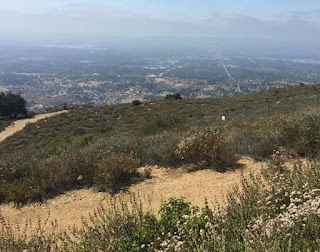In
the spring of 1968, Simon and Garfunkel released their fourth album,
“Bookends”. It had a song on it that caught my imagination right away: “Old
Friends”. It was a reflection on old age, and described two old men who sit on
a park bench like bookends. The lyrics of the hauntingly lovely song are, “Old
friends sat their park bench like bookends. A newspaper blown through the grass
falls on the round toes of the high shoes of the old friends. Old friends,
winter companions, the old men lost in their overcoats waiting for the sun. The
sounds of the city sifting through trees settle like dust on the shoulders of
the old friends. Can you imagine us years from today sharing a park bench
quietly? How terribly strange to be seventy. Old friends. Memory brushes the
same years. Silently sharing the same fears.” An online commentary on the
lyrics says that the song describes two old men who “ponder how strange it is to be nearing the end
of their lifetime.”
I
was 19 when the song came out, and Paul Simon and Art Garfunkel were both 26
when they recorded it. It was the time of the Viet Nam war. Martin Luther King
and Bobby Kennedy would be assassinated in April and June of that year. Richard
Nixon would be elected President in November. I was halfway through my
undergraduate studies in mathematics at UCLA, and active on the university’s
varsity gymnastics team.
Now
fifty years have passed. Half a century. On this day I turn seventy. Is it
“terribly strange to be seventy”? I rather think it might be. Simon and
Garfunkel both turn 77 this year. I wonder what they think about it.
The
Bible says, “The span of our life is seventy years, perhaps even eighty if we
are strong” (Psalms 90:10). Apparently when this psalm was written, seventy was
thought to be a full term of life. What does it mean to be “old”? I read a
Nancy Drew book a few months ago. The
Hidden Staircase, written in 1930 when the author was 25, described two
sisters as “elderly”. The way they were described, you’d think they were at
least eighty. But a few chapters later you discover that they were in their
late forties. I laughed out loud when that became clear. When I was fifty-five,
a college student prayed for me, and lovingly asked God to bless me “as I
neared the end of my life.” I was teaching two or three karate classes a week
at that time, and could do more pushups than any of the students including the
young men in their twenties.
Maybe
one can think “how terribly strange to be twenty” and not know much about
growing old. What is “old”? Well, maybe I am. Even if I live to be a hundred,
my life is more than two-thirds over. When one is twenty, one’s life stretches
far ahead into mystery. But the older one gets, there is less and less future
left to oneself, and the more memories one has. My memories go back to the
1950s. How terribly strange. How terribly strange to be seventy.
You
can find “Old Friends” by Simon and Garfunkel on youtube, of course. When I
listened to it just now, I cried. I don’t know why.
I
plan to celebrate my seventieth birthday by going to the public pool and
performing complex dives the way I used to do when I was twenty. I can still
execute a few of them. But I have the chronic aches, sagging face, and age
spots of the elderly. I stopped doing standing back flips on the ground when I
was in my early fifties. I’m not sitting on a park bench yet, lost in an
overcoat. But maybe I will be one day. By now I trust that I have learned the
most important life lesson of all, found in that same psalm quoted above:
“So teach us to number our days that we may apply
our hearts to wisdom” (Psalms 90:12). And as the Bible tells us in many places,
“The fear of the Lord is the
beginning of wisdom.” Life’s experiences teach the same thing. I should know. I
am seventy.


